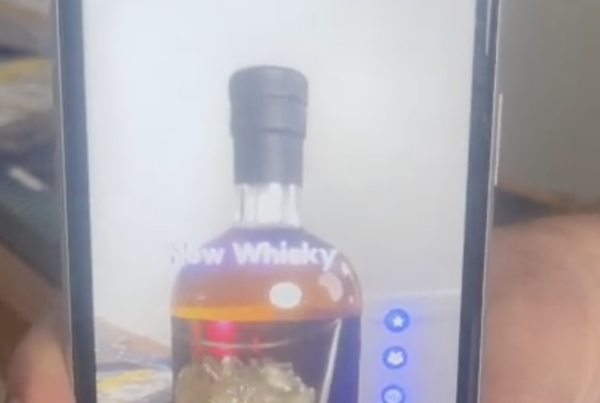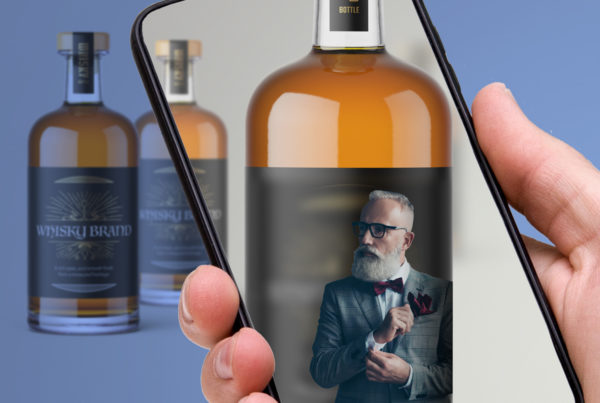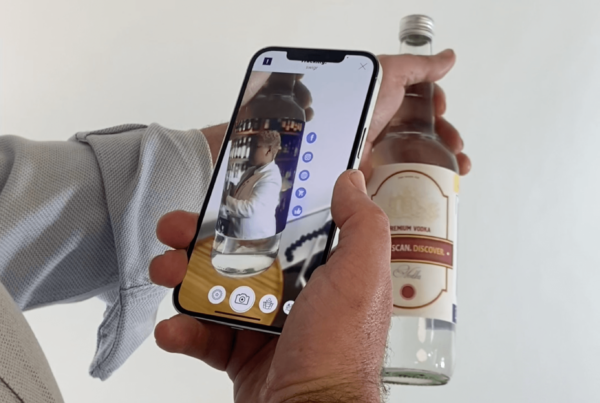
Augmented reality (AR) is a live, direct or indirect, view of a physical, real-world environment whose elements are “augmented” by computer-generated sensory input, that enriches the user’s experience.
AR can be defined as a system that fulfills three basic features: a combination of real and virtual worlds, interaction in real-time, and accurate 3D registration of virtual and real objects. AR applications provide information about the world in some way that is registered with objects that actually exist in the environment. This technology enhances one’s current perception of reality. When augmented reality is used, information about the surroundings and contextual data becomes interactive and digitally manipulable.
The use of AR technology has been growing in popularity and is being used in a number of different industries. Some of the most common uses for AR include:
Providing information about products
AR can be used to provide information about products that are on display in a store. For example, an AR app could be used to provide information about the features and benefits of a particular product.
Enhancing customer service
AR can be used to enhance customer service by providing employees with information about a customer’s specific needs. For example, an AR app could be used to show an employee where a particular product is located in a store.
Training and education
AR can be used for training and education purposes. For example, an AR app could be used to provide instructions on how to assemble a product.
Marketing and advertising
AR can be used for marketing and advertising purposes. For example, an AR app could be used to provide interactive experiences that promote a particular product or service.
AR technology is still in its early stages and there are many potential applications that have yet to be explored. As the technology continues to develop, it is likely that AR will become increasingly commonplace in a number of different industries.
As AR technology continues to develop, it is likely that it will become increasingly ubiquitous in a number of different industries. This technology has the potential to revolutionize the way we interact with the world around us and provide us with new and unique ways of experiencing the world. As the technology continues to evolve, we can expect to see AR being used in more and more unexpected places.

AR in Marketing and Advertising
AR can be used for marketing and advertising purposes. For example, an AR app could be used to provide interactive experiences that promote a particular product or service. The product and services that can be promoted using AR are only limited by the imagination of the marketers and advertisers. Some of the ways that AR can be used for marketing and advertising include:
Interactive experiences
AR can be used to create interactive experiences that engage the user and promote a product or service. For example, an AR app could be used to create an interactive game that promotes a particular product.
Product demonstrations
AR can be used to provide demonstrations of products. For example, an AR app could be used to show how a particular product works.
Virtual reality
AR can be used to create virtual reality experiences. For example, an AR app could be used to create a virtual tour of a particular location.
Augmented reality
AR can be used to create augmented reality experiences. For example, an AR app could be used to provide information about a product that is on display in a store.
AR can be used to create interactive experiences that are not possible with traditional forms of advertising. For example, an AR app could be used to place a virtual product in the real world, which would allow customers to see how the product would look in their own environment. This would give customers a more realistic view of the product and could potentially increase sales.
AR can also be used to create immersive and interactive experiences that engage customers on a deeper level. For example, an AR app could be used to take a customer on a virtual tour of a product or service. This would allow customers to get a better understanding of how the product or service works and could potentially increase interest and sales.
AR can also be used to provide information about products that are on display in a store. For example, an AR app could be used to provide information about the features and benefits of a particular product. This would give customers more information about the product and could potentially lead to increased sales.
AR in Customer Service
AR can be used to enhance customer service by providing employees with information about a customer’s specific needs. For example, an AR app could be used to show an employee where a particular product is located in a store.
AR can also be used to provide information about a customer’s order. For example, an AR app could be used to show an employee the status of a customer’s order and where it is in the production process. This would allow employees to provide better customer service by keeping customers up-to-date on the status of their orders.
AR can also be used to provide directions to customers. For example, an AR app could be used to show customers the way to a particular location in a store. This would be especially helpful for customers who are new to the store or are unfamiliar with the layout.

AR in Retail
AR can be used to enhance the retail shopping experience by providing customers with information about products that are on display in a store. For example, an AR app could be used to provide information about the features and benefits of a particular product. This would give customers more information about the product and could potentially lead to increased sales.
AR can also be used to provide directions to customers. For example, an AR app could be used to show customers the way to a particular location in a store. This would be especially helpful for customers who are new to the store or are unfamiliar with the layout.
AR can also be used to create immersive and interactive experiences that engage customers on a deeper level. For example, an AR app could be used to take a customer on a virtual tour of a product or service. This would allow customers to get a better understanding of how the product or service works and could potentially increase interest and sales.
Some examples of products that use AR in marketing, customer service, and retail include the following:
- IKEA Place: IKEA Place is an app that allows users to see how furniture would look in their home before they buy it.
- Sephora Virtual Artist: Sephora Virtual Artist is an app that allows users to try on makeup virtually before they buy it.
- Nike Fit Nike Fit is an app that allows users to find the perfect fit for their shoes before they buy them.
- Snatch: Snatch is an app that allows users to find the perfect fit for their clothes before they buy them.
AR in Product Packaging
Another retail application for AR is in product packaging. For example, AR can be used to provide instructions on how to assemble a product or how to use a product. This would be especially helpful for products that are complex or have many parts.
AR can also be used to provide information about the contents of a product. For example, an AR app could be used to provide information about the ingredients in a food product. This would be helpful for customers who are concerned about allergies or other dietary restrictions.
AR is also starting to make inroads into the beverage industry. For example, Heineken has developed an AR app that allows users to see how their beer is made. This app provides an immersive and interactive experience that engages customers on a deeper level.
AR can also be used to create social media experiences. For example, Facebook’s Messenger app now has an AR feature that allows users to place virtual objects in the real world. This can be used to create fun and interactive experiences with friends and family.
Overall, AR has a lot of potential applications in the commercial world. It can be used to increase customer engagement, provide information about products, and create social media experiences. As more companies adopt AR technology, we are likely to see even more innovative and exciting applications for it.












